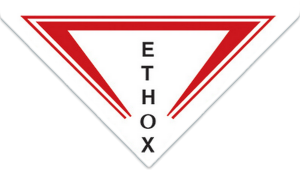Ethox Chemicals, in cooperation with Spektrochem, is pleased to present the results of a comprehensive test conducted on E-SPERSE® FT 600, evaluating its effectiveness in protecting latex paints against accidental and uncontrolled freezing. The primary objective was to assess good consistency paint that can be measured on a Stormer Viscometer after repeated freezing and thawing, and the findings detailed below provide insights into how E-SPERSE® FT 600 protects paints against freeze-thaw damage while maintaining the original gloss of the coatings. Additionally, testing shows how E-SPERSE® FT 600 can be used to control gloss when formulating.
Contained within the summary report are comprehensive videos documenting fully performed formulation development tests, including sample preparation in the Spektrochem lab, tests in accordance with ASTM D2243 and interpretation, allowing you to understand the effectiveness of E-SPERSE® FT 600.
A link to the complete technical report containing full test data is included at the bottom of the page.
Protection of waterborne paints against freezing with E-SPERSE® FT 600
Waterborne paints are exposed to temperature fluctuations both during transportation and storage. Particularly dangerous is the effect of low temperatures causing freezing of the water contained in liquid paint, as it may lead to the destruction of the paint, making it impossible to save and use it. In almost every case, the effect of frost on waterborne paints based on latex polymer dispersions causes their failure. Can you protect yourself against this? Yes! The newly developed E-SPERSE® FT 600 from Ethox Chemicals, LLC comes to the rescue. You will see how it works and why it can be helpful in your formulations in this article.
Introduction
Temperatures drop during winter, especially in the northern US (see Figure 1). At this time, waterborne paints based on polymer latex binders are also transported to paint stores and construction sites. Sometimes, heating failures in vehicles or in warehouses cause frost to affect paint buckets. During unloading of paints, accidental freezing may also occur, which is difficult to avoid.

Figure 1. Average winter temperatures in the US (source NOAA)
Waterborne paints based on polymer dispersions (latex binders) are sensitive to frost. Each label bears the PROTECT FROM FREEZING notice, and collective packaging usually includes a characteristic penguin with the same information. This happens because the polymer dispersions that bind latex paints do not withstand the pressure of ice formed during freezing and the dispersed polymer particles become deformed and coagulate, which leads to paint failure, ranging from an increase in its viscosity to a complete failure manifested by the formation of a rubbery “hockey puck” coagulates, granular structure, unmixable solidification (see Figure 2 for examples of post-freezing failure of two commercial paints).

Figure 2. Examples of failures of commercial paints after freezing and notices on paint packaging
E-SPERSE® FT 600 Additive
The solution to protecting latex paints against accidental and uncontrolled freezing is the E-SPERSE® FT 600 additive from Ethox Chemicals, LLC in South Carolina. It is a surfactant providing excellent wetting and dispersing properties, which, thanks to the stabilization of pigment and filler particles and, above all, the stabilization of polymer particles in the binder, protects latex paints against failure caused by freezing-thawing. E-SPERSE® FT 600 is also recommended as an additive to extend the open time and wet edge. The basic characteristics of the technical properties are shown in Figure 3.

Figure 3. Technical parameters of E-SPERSE® FT 600
Case Studies
To demonstrate the performance of E-SPERSE® FT 600 in a latex paint formulation, case studies were carried out using it in The Spektrochem Lab, as an independent technical center providing knowledge about raw materials and waterborne paint recipes. For this purpose, a latex paint formulation PVC 26% based on 100% acrylic polymer latex was developed, in which the effectiveness of E-SPERSE® FT 600 as a freeze-thaw additive was checked. The formulations were prepared as a base for a tinting medium.
The paints were prepared by mill-base grinding by Cowles-dissolver containing fillers and titanium dioxide in a vehicle (with additives, e.g. wetting and dispersing additives, in-can preservative, defoamer), which were combined in the let-down process with an acrylic binder and other additives (e.g. thickeners). E-SPERSE® FT 600 was added to the paints in amounts of 1%, 3%, and 5% by weight based on the total formulation, and the dosing was carried out at the let-down stage before the final viscosity adjustment using rheological additives. A CONTROL sample without E-SPERSE® FT 600 was also prepared for comparison.
ASTM D2243 Freeze-Thaw Test
To assess the freeze-thaw resistance of waterborne paints, the standard test method ASTM D2243-20 Standard Test Method for Freeze-Thaw Resistance of Water-Borne Coatings is used, in which liquid paints in 16 US fl. oz. resin-lined metal cans are placed at 0 °F and then thawed at 73.5 °F in the lab, thus subjecting them to 5 freeze-thaw cycles. After completion, the samples are assessed with a rating from 0 to 10, where 0 means complete failure and 10 means no failure (good consistency paint that can be measured on a Stormer Viscometer).
Figure 4 shows the results of paint viscosity changes measured with a Stormer Viscometer, comparing paints before freezing and paints after 5 freeze-thaw cycles in accordance with ASTM D2243.

Figure 4. Stormer Viscosity change results after 5 freeze-thaw cycles
As can be seen in the graph and photo in Figure 4, the CONTROL sample shows a failure caused by 5 freeze-thaw cycles, which makes viscosity measurement impossible. The CONTROL sample is clearly damaged.
However, if we analyze the photos of samples from E-SPERSE® FT 600, we can see that the addition of 1% to 5% improves the freeze-thaw resistance. Paints with 1% E-SPERSE® FT 600 after 5 freeze-thaw cycles, however, contain coagulates visible on the spatula, however, the viscosity can be measured and changes in viscosity are imperceptible compared to the sample not subjected to freeze-thaw cycles. In the case of samples with E-SPERSE® FT 600 at a dose of 3% and 5%, the absence of coagulants is visible, and the viscosity of the samples is also practically unchanged when comparing paints after 5 freeze-thaw cycles and paint samples not subjected to testing (see Figure 4).
To extend the scope of assessment of the impact of 5 freeze-thaw cycles and the E-SPERSE® FT 600 additive on paint coatings, the gloss of paint coatings was assessed before and after 5 freeze-thaw cycles. For this purpose, coatings were obtained from samples by automatic drawdown on BYK cards, which after conditioning at 73.5 °F and 50% relative humidity for 3 days, the gloss at 60° was measured using a Rhopoint Novo-gloss Trio gloss meter. The results are shown in Figure 5.

Figure 5. Changes in the gloss of coatings after 5 freeze-thaw cycles and the effect of E-SPERSE® FT 600 on the gloss
As shown in Figure 5, coagulum in the CONTROL sample is still visible on the coating, which also explains the significant reduction in the gloss of the coatings after 5 freeze-thaw cycles. Paint coatings with E-SPERSE® FT 600 at a dose of 1% have moderate inclusions and low gloss. Paint coatings with E-SPERSE® FT 600 at a dose of 3% and 5% do not have inclusions or coagulum, which shows that the performance of this additive also allows you to maintain a smooth coating. Interestingly, it can be noticed that the surfactant significantly increases the gloss of the coatings as the dose in the formulation increases. Comparing the results of the influence of the given 5 cycles of freeze-thaw resistance on gloss changes, E-SPERSE® FT 600 protects paints from damage against freeze-thaw and maintains the original gloss of the coatings, additionally, the property of E-SPERSE® FT 600 can be used to control gloss when formulating recipes.
Summary
In summary, E-SPERSE® FT 600 is a great addition to latex paints to make them resistant to freeze-thaw, especially in the winter when it is difficult to control unpredictable situations with the potential effect of freezing the paints and their failures. This additive allows preventive protection of latex paints against failure caused by freeze-thaw and can also be used as a gloss regulator to increase the gloss of coatings and as an open time/wet edge extender.
Contact Ethox Chemicals and ask about a sample of E-SPERSE® FT 600.








